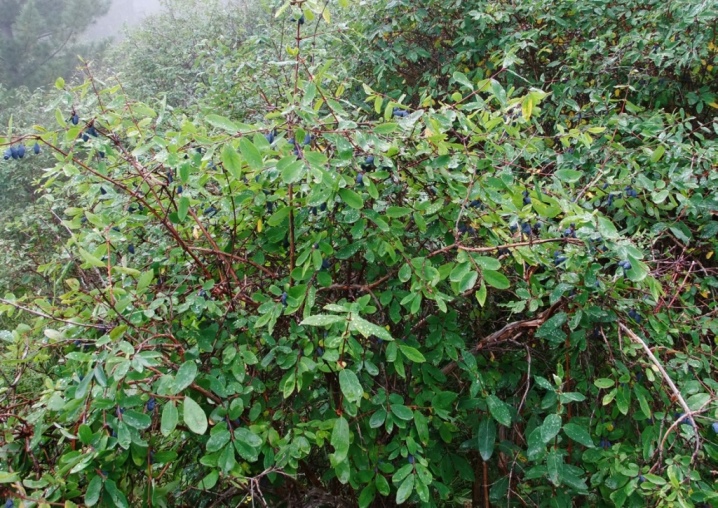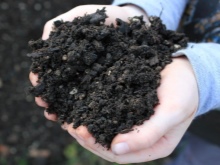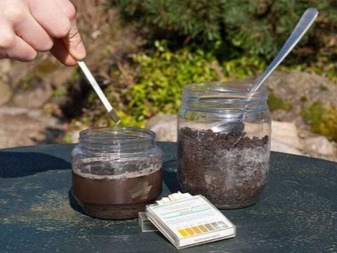What kind of soil does honeysuckle like?

Honeysuckle is a popular herb found in many regions of the country. There are edible and decorative varieties. In order for the plant to quickly take root and grow well, it is necessary to take care of the composition and quality of the soil in advance.

What composition is needed?
Honeysuckle is popular with gardeners due to its early fruits, which contain a large number of useful components. However, the plant is not in demand everywhere. Today the bushes are grown:
- in the Far East;
- in Western Siberia;
- in China and Korea.
Basically, preference for this plant is given to regions where the shrub can be grown even with minimal care. Garden honeysuckle loves coolness. But it is interesting that recently, honeysuckle began to be grown in the southern regions, where the bushes require special conditions.
In harsh climates, honeysuckle takes root quickly. The bushes are able to withstand light frosts and do not require strong care during the growth process.

But in the warmth, the culture grows poorly, practically does not bear fruit and suffers from the heat. Planting honeysuckle in the south without preparation is not worth it... Before planting a crop, it is better to fertilize the soil abundantly and change its acid-base values if they do not meet the requirements.
Only fertile soil is capable of providing the culture with the necessary supply of nutrients necessary for growth. There are several types of soils:
- clayey;
- peat;
- sandy;
- loamy;
- calcareous.
The best option for honeysuckle seedlings is sandy loam or loamy soil. Soils are rich in nutrients that are useful for a young plant. Sometimes the ideal solution is to plant a bush in black soil - the most fertile soil.


Properties of each option.
- Loam... In principle, such a soil is suitable for most plant species. It has a loose texture and high breathability, which is just important for honeysuckle. Most of the loam is soil, the remaining 30 are coarse sand.
- Sandy loam... It consists of sand and silt, it is characterized by increased water permeability and thermal conductivity. The soil warms up quickly in spring, so it is well suited for growing honeysuckle.
- Chernozem... Contains a lot of minerals and nutrients that will accelerate the growth of honeysuckle and ensure a bountiful harvest. The amount of useful components does not decrease due to the animals and plants remaining in the soil that have died.
The soil for the honeysuckle should be well structured. To determine whether the soil needs improvement, it is necessary to cut off the fertile layer with a shovel at least 10 cm thick, toss it up and carefully inspect the layer.



Possible options for filling the soil.
- Large amount of clay. In this case, the layer will fall with a pancake, and several small pieces will bounce off it during the impact.
- Lots of sand... This will be reported by a completely crumbled formation.
- Great structure. This soil is characterized by the scattering of the top layer of the soil into lumps of different sizes: from grains to grains.
The disadvantage of clayey soils is that they are poorly permeable to water and air.... After watering and rains, a solidified crust will form on the surface of the soil, which will not let the necessary substances through to the roots of the plant. The disadvantage of sandy soils is rapid drying out, which will also negatively affect the state of the culture.

Indicators of acidity and alkalinity
Honeysuckle is able to take root in any type of soil, it feels good in harsh climates. Therefore, in the northern regions, the plant practically does not need care. The range of soil acidity for planting honeysuckle ranges from pH 4.5 to pH 7.5. An exception is planting a plant in an undeveloped area or in warm areas.
You can check the acidity of the soil using litmus paper. For this:
- take samples of land from different places on the site;
- placed in bags of dense fabric;
- immersed in distilled water previously poured into containers for 5 minutes;
- immerse the acidity test in the containers for 10 seconds.
The paper will display the values almost immediately. If, according to the test results, the soil turns out to be acidic, then honeysuckle can be planted after fertilizing the bottom of the hole. If not, then six months before planting the plant, the soil will need to be prepared. This will require liming the soil with dolomite flour. For highly acidic soils, 500 g of flour per 1 m2 should be used; for slightly acidic soils, the dosage can be reduced to 400 g.


How to adjust the quality?
To organize the natural growth of the culture, it will be enough to transplant the bush into fertile soil in a sunny area. Additionally, it is worth taking care of drainage for the timely removal of excess moisture, as well as cover each planting hole with humus and potash, phosphorus fertilizers.
If, according to the results of the tests, it was found that the soil is not suitable for the crop, you can make a fertile mixture yourself. Available options:
- a mixture of humus and middle peat, the components of which are taken in equal proportions;
- a composition of sod land, peat or sand, humus in a ratio of 3: 1: 1, respectively.
If the soil is alkaline, then peat can be laid on the bottom of the planting pit. For acidic soils, on the contrary, it is better to use ash or lime in order to bring the indicators to the normative ones.


Gardeners' recommendations.
- Coarse sand will help improve the structure and fertile characteristics of heavy soils. Small ones should not be used, as it will only glue the earth together and worsen the survival rate of the plant.
- When preparing a soil mixture, it is not enough just to mix the components. First, they need to be sieved using a large sieve, only then you can add fertilizers and fill the planting hole with the finished composition. Many gardeners ignore this rule and increase the risk of plant death.
- If there is no sieve at hand to sift the components under the soil mixture, you can use a net from an old bed... To do this, the material will need to be installed on supports, and then peat, humus, sand and turf soil should be thrown up. Lumps can be broken up with a shovel.
- To fertilize the soil for honeysuckle, it is better to use horse humus or fertilizer from cattle. Poultry droppings can be used as liquid supplements, which will come in handy during the active growth of the bush.
- In the south, honeysuckle is recommended to be planted in shaded areas so that the plant does not die from heat and direct sunlight. If you plant a plant in a sunny place, all its strength will be spent on trying to survive, which will negatively affect the quantity and quality of the fruit.
Taking into account the recommendations will allow you to achieve a bountiful harvest when the honeysuckle takes root in a new place. You can grow a bush both in cool regions and in the south, if you check the acid-base balance of the earth in time and pick up fertilizers.












The comment was sent successfully.